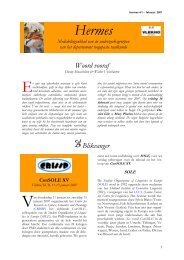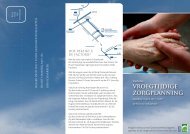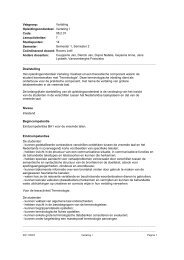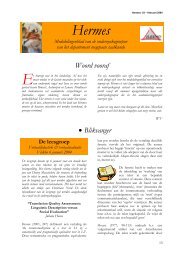HUB RESEARCH PAPER - Hogeschool-Universiteit Brussel
HUB RESEARCH PAPER - Hogeschool-Universiteit Brussel
HUB RESEARCH PAPER - Hogeschool-Universiteit Brussel
You also want an ePaper? Increase the reach of your titles
YUMPU automatically turns print PDFs into web optimized ePapers that Google loves.
Process consultation revisited 23<br />
remains silent. Everybody remains silent. The consultant observes “we are all here around the<br />
table”. Silence follows. After a little while a group member articulates his hopes and fears<br />
concerning the ongoing change process as it relates to his own job. Others join in the<br />
conversation and actors frame and reframe their and others’ concerns, mutually and respectfully<br />
explore thoughts and emotions, reflectively inquire into here-and-now group dynamics, and give<br />
advise to each other. The consultant remains ‘low key’ (e.g., Schein, 1999b), in the background,<br />
and only intervenes (with a content, procedure or process intervention) if he or she feels that this<br />
is helping to foster learning and helping relationships. Also, the consultant, as a behavioral<br />
model, frequently puts aside his own judgments or reactions to create space for input of the<br />
actors involved. This is an important working principle of dialogue as helping conversational<br />
form (e.g., Schein, 1999a, 2003b). Acting in this way is another exemplary behavior of the<br />
consultant that is experienced by the team leader as a ‘high quality’ intervention because it<br />
facilitates mutual learning and co-ownership of the process. The team leaders, and the team<br />
members, gradually incorporate this consultation behavior through closely observing the<br />
consultant, jointly reflecting on her-and-now interactions and relationships, experimenting with<br />
own interventions, and getting feedback from the consultant and co-actors. In doing so, they<br />
expand their (inter)action repertoire to enhance the interactivity and reflexivity, and thus the<br />
quality of the ongoing process. One team leader expresses “that what works” in intervision as<br />
“now, we are talking directly to each other instead of talking about each other behind someone’s<br />
back” (e.g., Shotter, 2004).<br />
Assembling relational practices. As mentioned earlier, the process of including and<br />
excluding voices in a certain relational practice is a very central concern when taking a relational<br />
practices perspective. It is also a central concern in the organizational change process of the







